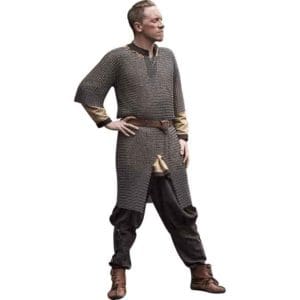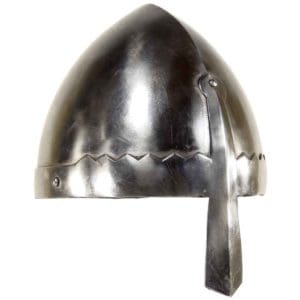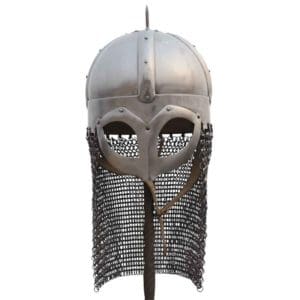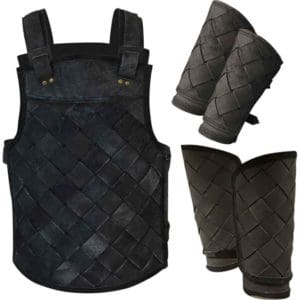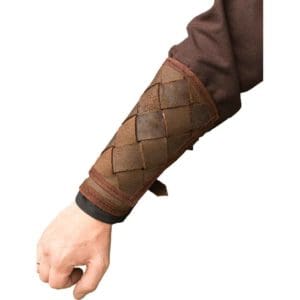A Look into Viking Armour
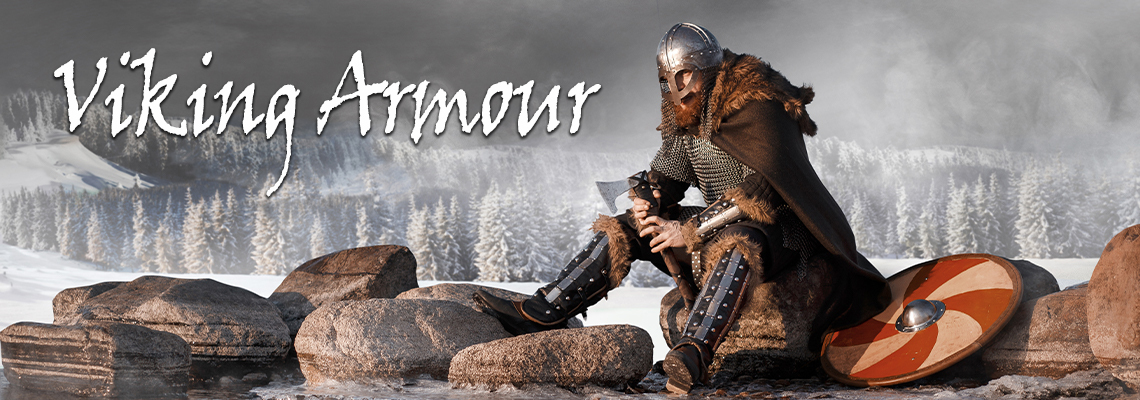
Are you interested in Viking warriors? In this post, we at Medieval Collectibles take a quick look at the armour worn by the Vikings. From shields to helmets and more, we break down what was the most popular protection and what was theoretically possible during the time period.
Viking Shields
Shields were easily one of the most common forms of protection for the Vikings. There were even laws governing them. The Gulating and Frostating laws were laws that governed how to construct a shield. Under these laws, shields were to be made from wood with three iron bands reinforcing them. They were to have a wooden handle fastened with iron nails. The laws were eventually revised to state a double layer of boards with a red-and-white painted front. These laws governed specific areas and were not necessarily followed to the letter. For example, there are rather few examples in archaeological record that feature the required three bands. Most did not have this style of reinforcement.
Most shields at the time would be close to three feet or slightly smaller in diameter. 32-36 inches in diameter was common. 37 inches was possible. They would usually feature solid butted planks, often spruce, fir, or pine. Many remaining examples indicate that they may have had leather edging to help protect the shield from blows to their edges. Also, most shields would have an iron boss in the center front. On the back, the shields would have full-length handles. Viking warriors would likely have had a leather sling to carry the shield on their back when they were not fighting or needed to use both hands.
Surviving Examples
When it comes to looking at surviving examples of Viking armour and shields, the best collection of Viking-era shields comes from a find at Gokstad, Norway. A ship was found there with a trove of goods including 64 shields. They were made from thin pieces of wood and helped contribute to the idea that Viking shields may have had animal skin fronts to help increase their strength without increasing the weight. If you are looking to carry your own Viking-style shield, you can check out shields like the Round Wooden Viking Shield.

Viking Helmets
Another form of protection for Vikings was a helmet. The most common form of the helmet was a bowl shape. It would often either have a nasal guard or a version of a face guard. The Gjermundbu helmet is the best surviving example of the facial guard style. We also offer multiple versions of the nasal guard helmet, including the Norman Nasal Helmet. Viking helmets unfortunately did not feature the rather popular horns that often show up in pop culture.
Helmets from the Viking age were usually made from multiple pieces of iron riveted together. This iron would often be what was called bog iron. Bog iron is essentially what it sounds like; iron that comes from a bog. Conditions in a bog would concentrate enough iron to use for smithing. Bog iron was one of the most common ways to source iron. This meant that iron was not terribly easy to get at the time. Therefore, anything made from iron at the time would have been expensive and more uncommon as a result. Helmets may have been repaired multiple times because it was hard to get more iron.
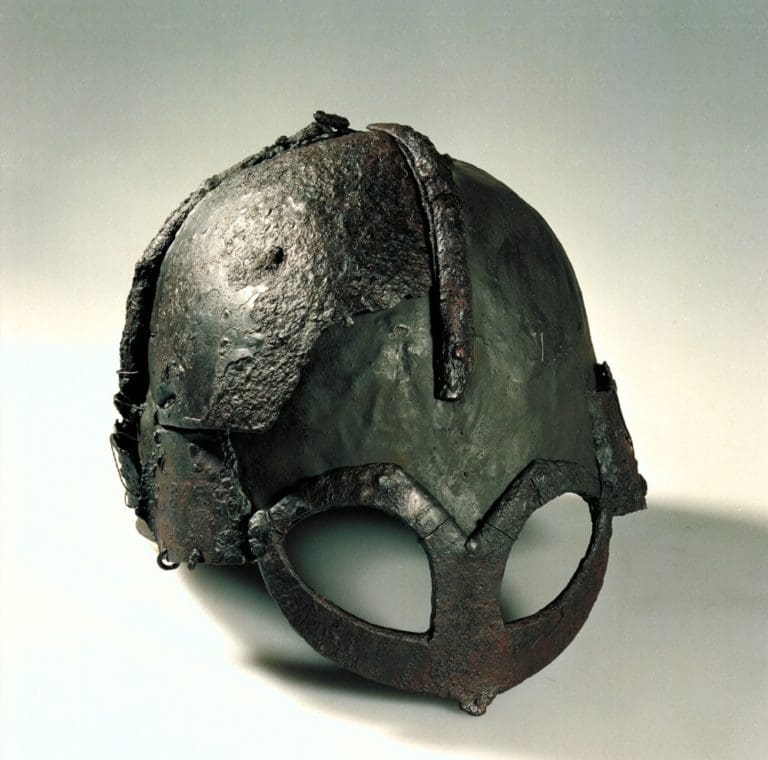
Chainmail
Chainmail existed during the Viking age. Vikings called chainmail byrnja, which translates to mail-shirt. These shirts would often consist of alternating solid and riveted rings. Chainmail rings were handmade. Riveted rings were usually made from wire formed by drawing it through smaller and smaller holes. Meanwhile, solid rings were usually punched out from a sheet of metal.
Again, as iron pieces like mail rings were rather expensive, chainmail was rarely made into large pieces. They would commonly be used in smaller applications to protect more vulnerable areas such as the back of the neck. A full chainmail shirt would have been a mark of a wealthy warrior. Rather little of Viking-era chainmail survives. This is due to its original expense and lack of popular use as well as the fact that much of what did exist has rusted over the years. If you want to look like a Viking warrior clad in chainmail, you can check out our chainmail pieces like the Ragnar Chainmail Hauberk.
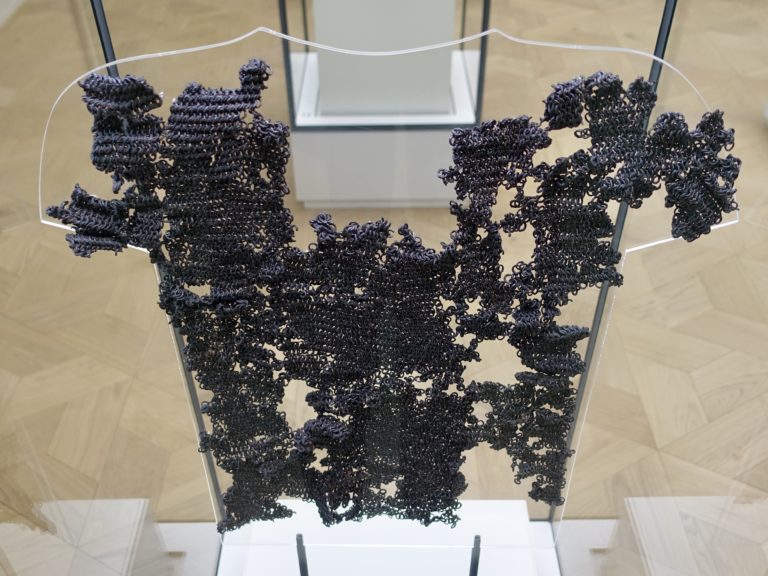
Historically Possible Armour
Leather Armour
When it comes to looking at Vikings and their armour, there are a couple of armour components that would have been theoretically possible. They are leather armour and arming wear. When it comes to leather armour, there are a few references in texts that suggest leather armour may have been used. These texts include the Heimskringla or the Saga of Olaf Haraldson, the Gestae Danorum, and Ragnar’s Saga. Leather armour existed before and after the Viking era, so it may have been available during the time frame.
However, there are no physical or archeological remains that support this idea. This may simply be due to the decomposable nature of leather in comparison to steel, or the leather may have later been repurposed rather than left as armour. If you prefer to dress as a Viking in leather armour, a couple of popular pieces that we offer are the RFB Viking Leather Armour and the RFB Viking Leather Bracers.
Arming Wear
Arming wear or padding underneath armour is an area of speculation when it comes to Viking armour. It has no physical or literary evidence at the moment. However, like leather armour, padding existed both before and after the Viking era. It certainly would have made wearing chainmail or other armour more comfortable.
Again, it is possible that such padding may have decomposed and thus no physical evidence remains. It is also possible that it may have been such a default to have it that no one would have thought it worthy of note when it came to writing its existence down. There are many instances in history where common knowledge wasn’t written down because everyone knew what you were talking about. A modern example of this is not needing to specify chicken eggs when writing a recipe that calls for eggs. So, it is possible that arming wear may have existed during the Viking era and been worn by Vikings, but currently no physical or literary evidence supports it.
-
RFB Viking Leather Armour Set
SKU: ARMOUR-L21Rated 0 out of 5$220.00 – $242.00$209.00 – $229.90 Add to Cart
With this post, we hope to have given you a look at the armour worn by the Vikings as well as what may have been possible at the time. From helmets to shields, Vikings knew how to protect themselves in battle with armour.


